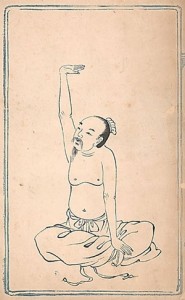 If you asked the average person how Traditional Chinese Medicine (TCM) keeps you healthy, they would probably answer that it uses acupuncture needles.
If you asked the average person how Traditional Chinese Medicine (TCM) keeps you healthy, they would probably answer that it uses acupuncture needles.
That is a good start.
TCM is a complex understanding of how Qi, or life force, affects your health. Qi flows through meridians passing through points which can be used to regulate and control that flow. When the flow of Qi increases, decreases or its quality changes, your health is affected. The most common way to manage the flow of Qi is with acupuncture needles.
But TCM is much more than needles.
In the second part of our two-part series “More than Needles,” you will learn three ways to keep yourself healthy using Traditional Chinese Medicine principles at home. By using these techniques in your daily life, you will be in charge of your health.
Qigong
Qigong is a moving mediation that uses a series of flowing postures to align breath and awareness. It can be used to increase Qi, circulate Qi, cleanse and heal the body, store Qi and emit Qi to heal others. As a practice, it combines medicine, philosophy and martial arts, all in one. Tai Chi is closely related to Qigong and considered to be one of the martial arts applications of it.
Qigong has many health benefits. It provides health, vitality, tranquility and mental focus. Many hospitals, clinics and community centers offer Qigong as a safe, easy way to stay fit, maintain balance and coordination, reduce stress and promote mental clarity.
A Qigong home practice is a great way to keep your Qi balanced.
Food/Nutrition
TCM uses many principles of diet and nutrition.
The flow of Qi is regulated by the Five Elements. Each element has a season and a taste. By choosing foods with a particular taste, you can support your health during each season. For example, the taste for autumn is pungent. Eat pungent foods like leeks, cabbage, turnips, ginger, horseradish, pepper, onions, garlic and chilies to support your health in the fall.
In addition you can use dietary principles of Traditional Chinese Medicine to support your own constitution. Based on your diagnosis, you can use nutrition to balance your own particular health issues.
It takes a while to get the hang of this. I can give you guidelines so you can take charge of your health in the kitchen.
Feng Shui
Feng Shui is the arrangement of your environment to promote the flow of Qi. Think of it as energy medicine for your home or work space; Feng Shui and TCM both hold the same core principles. By applying the principles of Feng Shui, you can create a home and work space that optimizes health, happiness and vitality.
In Feng Shui, Qi flows through your home the way it flows through your body. Strategic placement of mirrors and wind chimes, or the colors of your walls or furniture can balance the flow of Qi. Even your choice of home decorations can be important.
For example, east is the direction of health. Since east is associated with the wood element, increase Qi by placing a healthy green plant in the east section of your home. Bamboo is a particularly good choice because it symbolizes longevity and good health. Focus on wood furniture and the colors green and brown.
Declutter your living and work spaces to create peaceful, restorative environments. Make sure your air is clean and has as few pollutants as possible. Use natural light. All of these Feng Shui principles help you stay healthier.
Traditional Chinese Medicine keeps you healthy in many ways that don’t involve acupuncture needles. Take charge of your health. If you need advice for getting started, give me a call today.
Photo Credit: By Gueyang Shanren [Public domain], via Wikimedia Commons
